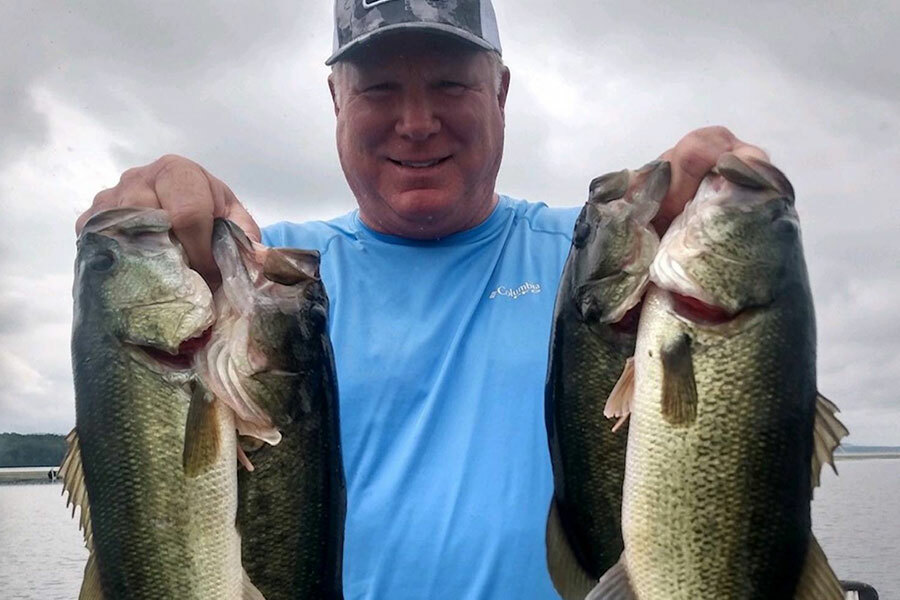Fall bass fishing is more active, with fish more willing to chase and work crank baits around channel edges, creek beds, and thin grass. Matching hatch size is crucial for feeding. Bass follow bait to river channel edges, and running crank bait at a 45-degree angle can be a deadly presentation.

Fall Bass Fishing - Crank Baits
As we progress into fall bass fishing and the summer starts to cool you will find the fish more active, more willing to chase and working crank baits around the edges of the channel, creek beds and thin grass will have the potential of loading the boat. I know for many, this can be frustrating as you seem to hang up a lot in the grass, but nothing will put more bass in your boat in the fall than a crank bait.
Do not be myopic, as it is not your traditional sized crank bait, I am referencing. In the fall, we see lots of schooling fish and nothing catches fish better than a small 1⁄4 oz. rattle trap when the bass are chasing and feeding. The size of a rattle bait this time of year is extremely important, as we get large bait fish hatches week after week in the fall so the bait their feeding on is small-in-size. Matching the hatch size is particularly important to the feeding process.
I also believe that as the water quickly changes temperature during the fall with every passing front, bass follow the bait to the edges of the river channel to find the cooling water. As this occurs, the edges of the channel load up with bass and fishing down to 8 - 10 ft. by running a crank bait at about a 45-degree angle off the edge of the channel can be a deadly presentation. You will hang up on grass some, but once you find the correct angle off the edge it will not be bad at all. Just snap through the grass when you hang it. Not only will this free the bait but the quick snap movement will cause reaction bites from largemouth bass.
It's also a fact that in the fall you should be cranking at a variety of depths as the bass do not all move to the shallows at the same time. Having said this, I keep several types of crank baits on my deck or at least quickly accessible. Try to break the depths up into 6 ft. or less, 6 to 12 ft. and 16 to 22 feet. If you are in hard bottom areas, you must be able to fish these depths with your crank bait bumping the bottom. For these hard bottom fishing areas, I choose crank baits that will bounce and grab off the bottom from 3 to 15 ft. of water. Hard bottom areas make the crank bait bounce and react even with some scattered grass. This action of bouncing and reacting off bottom structure can trigger reaction bites all over the lake. Cranking is one of the best ways to get reaction bites. Combine that with the rattle bait that you can run through schooling fish, and you have a deadly combination of ways to put largemouth bass in the boat.
The fall crank bait bite is much about the wobble of the bait. Flat sided crank baits that have a tight wobble are very much the bait of choice. Flat sided crank baits cause more vibration, replicate the natural bait and are easier to size to the hatch than the fat rounded crank baits that many of us are accustomed too. It is also true that we get less rain in the fall than any other time of year, so using bright colors is an excellent choice in the clear water. The key to crank bait fishing fall bass can be summed up this way; tight wobbling crank baits, get to the bottom so you maximize the reaction bite, let your bait do the work and do not get frustrated with hanging the bait up in grass, just snap it and let the bait do the work for you!
Capt. Mike Gerry
Fish Lake Guntersville Guide Service
www.fishlakeguntersvilleguideservice.com
www.facebook.com/FishGuntersville
Email: bassguide@comcast.net
Call: 256 759 2270
Mike Gerry In The Spread, Instructor









